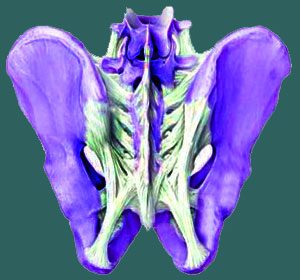
After diagnosis, it is important to know all the sacroiliac facts in order to improve your chances for enjoying lasting pain relief. In fact, even before being diagnosed with a verified SI joint condition, learning the facts concerning the SI joint and its susceptibility to suffer pain will provide more accurate diagnostic outcomes for virtually all patients, since they will be better able to recognize the common practice of misdiagnosis of joint pain syndromes.
Facts are considered indisputable truths in medicine that are based on solid research and clinical experience of the majority of doctors. However, it should be noted that medicine is truly a revisionary science. Sacroiliac facts have changed often throughout medical history, so what doctors view as objective truth today might change to something else tomorrow. Actually, we guarantee this occurrence, based on millennia of constant revision in which anatomical occurrences are considered factual, but eventually are recognized to be invalid.
This resource section provides facts about the sacroiliac joint and the various pain syndromes that occur here. If you want to learn the objective truths regarding sacroiliac symptoms, then you have come to the right place.
Controversy of Sacroiliac Facts
Doctors always think that they have everything right at any specific point in history. They admit that yesterday, their theories may have been misguided, but today, everything has been clarified. Medical history is nothing more than a collection of “todays” that quickly become “yesterdays”, meaning that change in what is considered correct is continuous. Scientific advancement means abandoning old mindsets of causation and treatment and embracing new evidence about the “true” nature of pain. However, how do we ever actually know when we are seeing something objectively correct as opposed to subjectively correct?
In our experience, as long as there are regular “exceptions to the rule” seen in clinical medicine, it means that something, somewhere, is probably misunderstood or incorrectly correlated to some incidental occurrence. When you add in the financial incentives for preserving antiquated theories of pain into the mix, there are countless examples of “SI joint fact” that are highly questionable from any enlightened point of view, but are still widely accepted simply because they make caregivers lots of money.
It is one of our primary missions to help patients to achieve better diagnostic and treatment results by informing them how money influences the care they receive for every health issue. When it comes to sacroiliac pain, there are many mythologies still embraced by various factions within the larger healthcare community simply because they generate income for care providers. The health sector will never be truly “fact-based” as long as this problem goes unaddressed.
Currently Accepted SIJ Facts
Below, we provide an accounting of many topics related to the facts of SI joint anatomy and the various pain conditions that can affect it. As each new dialog is completed and made available, it will be shared in the following section:
Sacroiliac pain sitting might occur at all times, but is mostly likely to worsen when the patient must support themselves fully with the buttocks and hips, such as when on a stool, or when first sitting from a standing position or transitioning back to standing from a seated posture.
Sacroiliac pain standing usually is aggravated when placing the majority of weight on one leg on the affected side of the anatomy.
Sacroiliac pain walking is common, especially when taking large strides forward or walking up or down steps.
Sacroiliac pain running often mirrors the same patterns as when walking, but the symptoms are typically worse. In some patients, walking is well tolerated, but the added strain and impact of running induces severe symptoms.
Sacroiliac pain in athletes might be generally experienced from common activities like running or might be related to activity-specific components of a sport or pastime.
Elderly sacroiliac pain is far less common than one would think, given the advanced state of joint deterioration in seniors. This information is very telling when considering the true facts of sacroiliac joint pain syndromes.
Sacroiliac pain lying down is rare, since the body should be well supported in supine and prone positions. Some patients do experience pain while reclining in a fetal position unilaterally, while others experience pain while transitioning to a sitting or standing posture.
Sacroiliac after giving birth is very common due to hormonal changes that occur during pregnancy and birth. Sometimes, the SI joint is affected long-term by these anatomical alterations and becomes unstable.
Sacroiliac pain during sex is very common. However, pain that only occurs during sex, but not during other activities, is often of psychogenic nature, as is the case with most dorsalgia conditions.
Sacroiliac pain during menstruation links are found throughout the medical literature. During the monthly period, chemical changes in the female body can incite SI joint symptoms.
Sacroiliac pain explanations can follow many healthcare philosophies and therefore might vary greatly in scope and theory. Learn about various explanations for SI joint pain based on ideology.
Sacroiliac information should always be judged based on its source and the motivation of the source. In many cases, “information” is not factual and should be called “marketing” or even “propaganda” with a definitive agenda.
Sacroiliac research helps develop the newest treatment strategies for an assortment of diagnosed conditions.
Are you looking for quality and unbiased sacroiliac pain advice? We provide it by offering a simple checklist of tips that will improve your chances for correct diagnosis and satisfying treatment outcomes.
Sacroiliac disability is a definite possibility from severe cases of joint degeneration, infection or dysfunction. Luckily, most cases of SI joint pain can be successfully treated and disability reversed.
Sacroiliac problems vary from patient to patient, including skeletal issues, soft tissue issues, disease-related issues and mindbody pain issues. SI joint pain can be enigmatic from a diagnostic perspective, so it is important to evaluate each condition with an open mind and not make assumptions.
Still looking for a specific answer to a particular question? Check out of sacroiliac FAQ section to get the help you need.
Sacroiliac Facts Summary
We caution patients to be wary and not simply accept everything they see or hear as being factual without some independent research and objective consideration. Always question the motivation of the source when judging any information claiming to be fact. Are you being marketed to? Is a doctor trying to get you to acquiesce to treatment or surgery? Is a drug or pain product manufacturer making claims to get you to purchase it? How do you know the real truth?
We address these concerns throughout this website through our patient education efforts. Be sure to utilize all the materials in this free website to help you separate sacroiliac fact from fiction and get on the path towards lasting relief, instead of financial exploitation and the possibility of enduring unnecessary treatment or surgery.
Sacroiliac Joint Pain > Sacroiliac Facts






